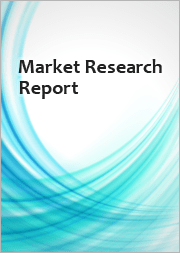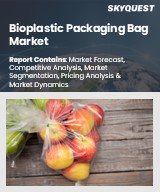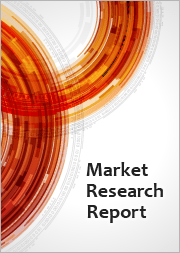
|
시장보고서
상품코드
1851493
플라스틱 포장 : 세계 시장 점유율 분석, 산업 동향, 통계, 성장 예측(2025-2030년)Global Plastic Packaging - Market Share Analysis, Industry Trends & Statistics, Growth Forecasts (2025 - 2030) |
||||||
플라스틱 포장 시장 규모는 2025년에 4,934억 2,000만 달러에 달하고, 2030년에는 5,799억 5,000만 달러에 이를 것으로 예상되며, 예측 기간의 CAGR은 3.28%를 나타낼 전망입니다.

견고한 전자상거래 활동, 편의성 높은 식품 소비 증가, 대체 기판에 대한 비용 경쟁 우위는 규제 모니터링이 강화되는 가운데 지속적인 수요를 뒷받침하고 있습니다. 케미컬 리사이클 라인에 자금을 공급하고 테더 캡 규제에 맞추어 팩을 재설계하고 높은 리사이클 함량 기준을 충족할 수 있는 기존 기업은 경쟁 우위를 확보하고 있지만 중소 컨버터는 컴플라이언스 비용 상승에 직면하고 있습니다. 동시에 물류 인플레이션은 운임을 줄이는 경량 유연한 형식의 가치 제안을 강화하고 전자상거래, 식품 및 건강 관리 채널에서 공급업체와의 계약을 강화합니다. 첨단 연구개발과 폐쇄 루프 공급 계약에 자금을 공급하기 위해서는 규모 확대가 필수 조건이 되기 때문에 기업 통합이 가속화됩니다.
세계의 플라스틱 포장 시장 동향과 인사이트
내구성이 높은 라스트 원마일 팩을 요구하는 전자상거래 붐
마지막 마일 배송 모델은 포장이 여러 핸들링 이벤트 및 치수 중량 청구에 노출되기 때문에 브랜드 소유자는 딱딱한 대체품에 비해 보이드 공간을 최대 75% 축소하는 필름, 파우치, 메일러를 선호하게 되었습니다. 현재 30만 개가 넘는 SKU를 다루는 아마존의 프라스트레이션 프리 포장 프로토콜은 사실상 업계 사양을 형성하고 중소기업 판매자를 준수하는 폴리에틸렌 및 폴리프로필렌 솔루션으로 밀고 있습니다. 자동 분류 라인에서는 광학적 감지를 견딜 수 있는 단일 소재 구조가 요구되며, 소재가 혼합된 팩은 불합격과 비용이 많이 드는 재가공의 위험이 있습니다. 포장량이 15% 줄면 운임이 12% 저렴해 고성능 플렉서블 필름의 8-10%의 재료 프리미엄을 상쇄할 수 있습니다. 배리어 코팅된 플렉서블 필름은 전자기기나 온도에 민감한 의약품에도 보호를 확대하여 식품 이외에도 대응 가능한 부문을 넓히고 있습니다.
편의식품 및 음료 소비 급증
도시화, 가구 인원수 감소, 노동시간 연장으로 한식분씩 보존 가능한 식사에 대한 수요가 높아지고 있습니다. 산소와 수분 장벽과 전자 레인지 적합성을 결합한 다층 유연성은 보존성과 안전성에서 종이 기반 옵션을 능가합니다. 음료 제조업체 각 회사는 규제상의 벌칙을 피하기 위해 끈이 달린 클로저와 탬퍼 증거 기능을 추가하여 1개당 0.02-0.04유로의 제조 비용 증가를 흡수하고 있습니다. 유통기한이 연장된 팩으로 유제품과 주스 브랜드는 콜드체인이 없는 농촌에도 진출할 수 있게 되어 신흥 시장에서의 유연한 우위성이 더욱 견고해집니다.
세계 일회용 플라스틱 금지 및 세금
캘리포니아 가방 금지령, 영국 습식 티슈 금지령, 남호주 EPS 규제는 사실상 밤새 전체 제품 카테고리를 철폐합니다. 시행에는 수입 제한과 엄격한 벌금이 포함되어 긴급 개선과 설비 투자 지출을 촉진합니다. 가나에서 제안한 가방 금지에 관한 학술 연구는 매주 34만 달러의 세수 손실을 예상하고, 보다 광범위한 경제 파급 효과를 강조합니다. 다국적 기업은 '단일 유스'의 정의가 법역에 따라 다르다는 것을 고민하고 있으며 세계 SKU의 조화를 복잡하게 만듭니다. 법제화에 의해 대상이 분명한 일회용 품목 이외에도 확대됨에 따라 외식산업이나 2차 포장의 업태에 새로운 수량 리스크가 부상하고 있습니다.
부문 분석
연포장은 2024년 매출의 54.65%를 차지했으며, 2030년까지 연률 4.56%를 나타낼 것으로 예상되며, 플라스틱 포장 시장은 리지드 포장을 훨씬 웃도는 속도로 확대합니다. 연료비 인플레이션 및 치수 중량화물 관세는 파우치, 메일러, 랩 필름으로의 구조적 전환을 강화하고 아웃바운드 물류 요금을 절감합니다. 필름과 랩은 컨버터가 유통기한을 잃지 않고 EPR의 틀을 충족시키는 단일 소재 옵션을 전개함에 따라 더욱 견인력을 증가시킵니다. 단단한 병, 항아리, 트레이는 구조와 고급스러운 선반이 가장 중요한 경우 필수성을 유지하지만 재실러블 지퍼, 주둥이 및 스탠드 업 형식이 역사적인 특징의 이점을 침식함에 따라 점유율이 점차 감소합니다. 두 형식을 모두 제공하는 통합 공급업체는 브랜드 소유자가 공급업체 기반을 간소화함에 따라 더 높은 지갑 공유를 보장합니다.
리지드 포장의 하위 부문은 수지의 급등이 패스 스루 능력을 웃돌아, 마진 압력에 직면하고 있지만, 플렉서블 포장의 동업 타사는 단위당 그램 중량을 가볍게 함으로써 익스포저를 경감하고 있습니다. 유리와 금속의 대안은 여전히 틈새 시장이며 음식과 통조림으로 제한됩니다. 트레이 제조업체는 오븐 세이프와 전자레인지 대응 기능이 가격 프리미엄을 요구하는 푸드서비스 채널에서 관련성을 유지하고 있습니다. 전반적으로 유연성은 수량과 성장의 양면에서 주도권을 잡고 있으며 예측 기간 동안 플라스틱 포장 시장을 견인하는 중심적인 역할을 담당하고 있습니다.
2024년의 플라스틱 포장 시장 점유율은 폴리에틸렌이 42.32%를 차지했지만, 폴리프로필렌의 CAGR은 5.79%로 선진 포장이며, 가장 진보가 현저한 수지 패밀리입니다. PP의 높은 내열성, 개선된 투명성, 보다 우수한 밀봉성은 식품의 안전성을 지키면서 재활용 의무에 적합한 단일 소재 솔루션을 촉진합니다. PET는 병에서 병으로의 재활용 루프가 확립되어 음료용으로 아성을 지키고 있지만 기계적 재활용에는 한계가 있기 때문에 비용이 많이 드는 화학적 재활용 능력을 추가하지 않고 재활용률에 상한을 마련하고 있습니다. PVC, 폴리스티렌 및 기타 스티렌계 수지는 환경 규제 강화 및 브랜드 소유자 별거의 영향을 받아 후퇴하여 바이오베이스 및 특수 공중합체의 틈새 분야에 활로를 엽니다.
화학 재활용의 경제성은 안정한 해중합 경로를 갖는 수지에 더욱 유리하기 때문에 PET와 PP는 더 큰 설비 투자를 모으지만 PS와 PVC 프로젝트는 투자 장애물을 지우는 데 어려움을 겪고 있습니다. 수지 공급업체는 EPR의 틀과 FDA의 식품 접촉 규칙이 진화하는 동안 컨버터가 재료를 이행할 때의 지침이 되는 용도 엔지니어링 팀을 통해 차별화를 도모하고 있습니다.
지역 분석
아시아태평양은 2024년 세계 매출의 41.23%를 차지했고, CAGR 7.02%를 나타내 있으며, 플라스틱 포장 시장의 성장 엔진이 되고 있습니다. 폐기물 수입 규제의 엄격화와 탄소 중립성의 공약으로 인해 지역 생산자는 재활용 능력에 대한 투자를 강요하고 있지만 중국은 큰 점유율을 차지하고 있습니다. 인도, 베트남, 인도네시아는 조직 소매 및 전자상거래의 침투가 깊어짐에 따라 두 자리 수량 증가를 기록하고 있습니다. 통화 변동과 지정학적 요인으로 인해 다국적 브랜드 소유자는 ASEAN 국가에 대한 조달을 다양화하여 특정 국가에 대한 과도한 의존성을 줄일 수 있습니다.
북미는 의약품 수요, 신선 식품 물류 및 고도 재활용 허브 건설에 힘입어 한 자릿수 중반의 꾸준한 확대를 보여줍니다. 주 수준의 플라스틱 폐기물 규제는 복잡성을 늘리고 있지만 동시에 재활용 및 단일 소재 혁신자에게 기회를 제공합니다. 캐나다에서 곧 시작되는 전국적인 EPR 프레임 워크는 재활용 가능한 팩으로의 이동을 가속화하고 국경을 넘어서는 파트너십을 촉진합니다.
EPR과 테더캡 의무화의 진원지인 유럽에서는 금액의 성장이 완만하지만 세계적인 설계 기준에 대한 영향력은 큽니다. 높은 인건비와 에너지 비용이 공정 자동화와 수지의 경량화를 촉진하고, 규제 당국이 재활용 함량의 기준치를 끌어올려 화학 재활용에 대한 투자를 촉진합니다. 동유럽의 컨버터는 서유럽의 비용 기반 없이 지역적인 근접성을 요구하는 브랜드에 의해 리쇼어링 프로젝트를 유치해, 폴란드와 헝가리에의 자본 유입에 박차를 가하고 있습니다.
라틴아메리카와 중동 및 아프리카는 점유율로 후진을 숭배하고 있지만, 급증하는 포켓을 기록하고 있습니다. 브라질은 장벽 포장이 필요한 농산물 수출로 이익을 얻는 반면, GCC 국가들은 석유화학의 통합을 활용하여 경쟁력 있는 가격의 수지를 수출합니다. 아프리카 시장에서는 일회용 금지가 법제화되기 시작해, 저렴한 가격대에서 저중량, 고배리어성의 솔루션을 제공할 수 있는 플렉서블 제조업체에 있어서 비옥한 토지가 태어나고 있습니다.
기타 혜택 :
- 엑셀 형식 시장 예측(ME) 시트
- 3개월간의 애널리스트 지원
목차
제1장 서론
- 조사 전제조건과 시장 정의
- 조사 범위
제2장 조사 방법
제3장 주요 요약
제4장 시장 상황
- 시장 개요
- 시장 성장 촉진요인
- E-Commerce 붐, 내구성이 높은 라스트 원 마일 팩을 요구
- 편의식품 및 음료의 소비 급증
- 대체 기판에 대한 비용 경쟁력
- 화학 재활용 인프라 확대
- EPR 대응을 위한 단일 소재 필름으로의 변화
- EU의 테더 캡 규제가 특수 클로저의 판매량 촉진
- 시장 성장 억제요인
- 세계의 일회용 플라스틱 금지와 세금
- 불안정한 석유 원료 가격
- 브랜드 오너는 종이 기반의 플렉서블 제품으로 전환
- 리필/재이용 모델이 수량 성장 잠식
- 공급망 분석
- 규제 전망
- 기술 전망
- Porter's Five Forces 분석
- 신규 참가업체의 위협
- 구매자의 협상력/소비자
- 공급기업의 협상력
- 대체품의 위협
- 경쟁 기업 간 경쟁 관계
- 투자분석
제5장 시장 규모와 성장 예측
- 포장 유형별
- 경질 포장 유형
- 병 및 항아리
- 캡 및 클로저
- 트레이 및 용기
- 기타 제품 유형
- 연질 포장 유형
- 파우치 및 백
- 필름 및 랩
- 기타 제품 유형
- 경질 포장 유형
- 재료별
- 폴리에틸렌(HDPE, LDPE, LLDPE)
- 폴리에틸렌 테레프탈레이트(PET)
- 폴리프로필렌(PP)
- 폴리스티렌 및 EPS
- 폴리염화비닐(PVC)
- 기타(EVOH, 바이오플라스틱 등)
- 최종 사용자 업계별
- 식품
- 음료
- 헬스케어 및 의약품
- 화장품 및 퍼스널케어
- 기타 최종 사용자 업계
- 유통 채널별
- 직접 판매
- 간접 판매
- 지역별
- 북미
- 미국
- 캐나다
- 멕시코
- 유럽
- 독일
- 영국
- 프랑스
- 이탈리아
- 스페인
- 러시아
- 기타 유럽
- 아시아태평양
- 중국
- 인도
- 일본
- 한국
- 호주 및 뉴질랜드
- 기타 아시아태평양
- 중동 및 아프리카
- 중동
- 아랍에미리트(UAE)
- 사우디아라비아
- 튀르키예
- 기타 중동
- 아프리카
- 남아프리카
- 나이지리아
- 이집트
- 기타 아프리카
- 남미
- 브라질
- 아르헨티나
- 기타 남미
- 북미
제6장 경쟁 구도
- 시장 집중도
- 전략적 동향
- 시장 점유율 분석
- 기업 프로파일
- Amcor PLC
- Mondi PLC
- Sealed Air Corporation
- ALPLA Group
- International Paper
- Pact Group
- Plastipak Holdings Inc.
- Huhtamaki Oyj
- UFlex Limited
- Constantia Flexibles
- Tetra Pak International SA
- Novolex
- Anchor Packaging LLC
- Liquibox(Olympus Partners)
- Quadpack Industries SA
- Dart Container Corporation
- American Packaging Corporation
- Printpack Inc.
- Winpak Ltd.
- Sigma Plastics Group
- Sonoco Products Company
- Transcontinental Inc.
- Greif, Inc.
- Coveris Group
- Nampak Ltd.
제7장 시장 기회와 향후 전망
KTH 25.11.21The plastic packaging market size reached USD 493.42 billion in 2025 and is projected to attain USD 579.95 billion by 2030, expanding at a 3.28% CAGR over the forecast period.
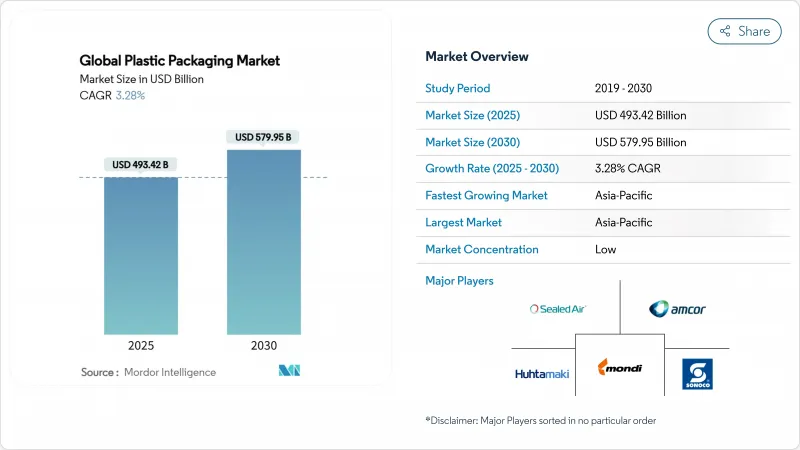
Robust e-commerce activity, rising convenience-food consumption, and cost-competitive advantages over alternate substrates underpin sustained demand even as regulatory scrutiny intensifies. Incumbents able to fund chemical-recycling lines, redesign packs for tethered-cap rules, and meet high recycled-content thresholds secure competitive insulation while smaller converters confront escalating compliance costs. Concurrently, logistics inflation elevates the value proposition of lightweight flexible formats that trim freight bills, strengthening supplier contracts in e-commerce, food, and healthcare channels. Consolidation accelerates as scale becomes prerequisite for funding advanced R&D and closed-loop supply agreements.
Global Plastic Packaging Market Trends and Insights
E-commerce Boom Demanding Durable Last-Mile Packs
Last-mile delivery models expose packages to multiple handling events and dimensional weight billing, prompting brand owners to favor films, pouches, and mailers that shrink void space by up to 75% versus rigid alternatives. Amazon's frustration-free packaging protocol, now covering more than 300,000 SKUs, shapes de facto industry specifications and pushes SME sellers toward compliant polyethylene and polypropylene solutions. Automated sortation lines require mono-material constructions that withstand optical detection; mixed-material packs risk rejection and costly rework. A 15% reduction in package volume translates to 12% lower freight expenditure, more than offsetting the 8-10% material premium for high-performance flexible films. Barrier-coated flexibles also extend protection to electronics and temperature-sensitive pharmaceuticals, broadening addressable segments beyond food.
Surge in Convenience-Food and Beverage Consumption
Urbanization, smaller household sizes, and longer working hours spur demand for single-portion, shelf-stable meals. Processed-food uptake among urban consumers rose 8.2% year-on-year in 2024, the fastest climb on record.Multilayer flexibles combining oxygen and moisture barriers plus microwave compatibility outperform paper-based options on shelf-life and safety. Beverage innovators add tethered closures and tamper-evident features, absorbing EUR 0.02-0.04 extra per unit in manufacturing cost to avoid regulatory penalties. Extended shelf-life packs enable dairy and juice brands to reach rural areas lacking cold chains, further cementing flexible dominance in emerging markets.
Global Single-Use Plastic Bans and Taxes
California's bag prohibitions, the UK's wet-wipe ban, and South Australia's EPS restrictions remove entire product categories virtually overnight. Enforcement includes import restrictions and stiff fines, driving emergency reformulations and CapEx outlays. Academic work on Ghana's proposed bag bans estimates weekly tax-revenue losses of USD 0.34 million, underscoring broader economic spillovers. Multinationals grapple with divergent definitions of "single-use" across jurisdictions, complicating global SKU harmonization. As legislators widen scope beyond obvious disposable items, additional volume risks emerge for food-service and secondary-packaging formats.
Other drivers and restraints analyzed in the detailed report include:
- Cost-Competitive Performance Versus Alternate Substrates
- Expansion of Chemical-Recycling Infrastructure
- Volatile Petro-Feedstock Prices
For complete list of drivers and restraints, kindly check the Table Of Contents.
Segment Analysis
Flexible formats commanded 54.65% of 2024 sales and are forecast to grow at 4.56% annually through 2030, expanding the plastic packaging market far faster than rigid alternatives. Fuel cost inflation and dimensional-weight freight tariffs reinforce a structural migration toward pouches, mailers, and wrap films that cut outbound logistics charges. Films and wraps gain further traction as converters deploy mono-material options that satisfy EPR frameworks without compromising shelf life. Rigid bottles, jars, and trays retain indispensability where structure or premium shelf presence is paramount, yet their share gradually declines as resealable zippers, spouts, and stand-up formats erode historical feature advantages. Integrated suppliers offering both formats secure higher wallet share as brand owners streamline vendor bases.
Rigid-package sub-segments confront margin pressure when resin spikes outpace pass-through ability, whereas flexible peers mitigate exposure through lighter gram-weight per unit. Glass and metal replacements remain niche, limited to beverages and canned foods. Tray makers preserve relevance in food-service channels where oven-safe or microwave-ready features command price premium. Overall, flexibles' dual leadership in volume and growth cements their central role in driving the plastic packaging market over the forecast horizon.
Although polyethylene held 42.32% plastic packaging market share in 2024, polypropylene's superior 5.79% CAGR positions it as the fastest-advancing resin family. PP's higher heat resistance, improved clarity, and better seal integrity facilitate mono-material solutions that meet recyclability mandates while safeguarding food safety. PET protects its beverage stronghold owing to established bottle-to-bottle recycling loops, yet mechanical-recycling limitations cap recycled content without costly chemical-recycling capacity additions. PVC, polystyrene, and other styrenics retreat under stricter environmental rules and brand-owner deselection, opening space for bio-based and specialty co-polymer niches.
Chemical-recycling economics further favor resins with stable depolymerization pathways; hence PET and PP attract greater capex, while PS and PVC projects struggle to clear investment hurdles. Resin suppliers differentiate through application engineering teams that guide converters during material transitions, a service highly prized amid evolving EPR frameworks and FDA food-contact rules.
The Plastic Packaging Market Report is Segmented by Packaging Type (Rigid Packaging Type, Flexible Packaging Type), Material (Polyethylene, PET, Polypropylene, Polystyrene and EPS, PVC, Others), End-User Industry (Food, Beverage, Healthcare and Pharmaceuticals, and More), Distribution Channel (Direct Sales, Indirect Sales), and Geography. The Market Forecasts are Provided in Terms of Value (USD).
Geography Analysis
Asia-Pacific controlled 41.23% of global revenue in 2024 and is expanding at 7.02% CAGR, making it the undisputed engine of plastic packaging market growth. China accounts for the lion's share, though stricter waste-import rules and carbon-neutrality pledges compel local producers to invest in recycling capacity. India, Vietnam, and Indonesia record double-digit volume gains as organized retail and e-commerce penetration deepens. Currency volatility and geopolitics prompt multinational brand owners to diversify sourcing into ASEAN nations, reducing overreliance on any single country.
North America manifests steady mid-single-digit expansion underpinned by pharmaceutical demand, fresh-produce logistics, and the build-out of advanced-recycling hubs. State-level plastic-waste legislation adds complexity, yet it simultaneously opens opportunities for recycled and mono-material innovators. Canada's forthcoming nationwide EPR framework accelerates shift toward recyclable packs, encouraging cross-border partnerships.
Europe, the epicenter of EPR and tethered-cap mandates, experiences modest value growth but exerts outsized influence on global design standards. High labor and energy costs incentivize process automation and resin lightweighting, while regulators push recycled-content thresholds that drive chemical-recycling investments. Eastern European converters attract reshoring projects as brands seek regional proximity without Western Europe's cost base, spurring capital inflows into Poland and Hungary.
Latin America and the Middle East & Africa trail in share but register pockets of rapid expansion. Brazil benefits from agrifood exports that require barrier packaging, whereas GCC nations leverage petrochemical integration to export competitively priced resin. African markets begin to legislate single-use bans, creating fertile terrain for flexible producers that can deliver low-gram-weight, high-barrier solutions at affordable price points.
- Amcor PLC
- Mondi PLC
- Sealed Air Corporation
- ALPLA Group
- International Paper
- Pact Group
- Plastipak Holdings Inc.
- Huhtamaki Oyj
- UFlex Limited
- Constantia Flexibles
- Tetra Pak International SA
- Novolex
- Anchor Packaging LLC
- Liquibox (Olympus Partners)
- Quadpack Industries SA
- Dart Container Corporation
- American Packaging Corporation
- Printpack Inc.
- Winpak Ltd.
- Sigma Plastics Group
- Sonoco Products Company
- Transcontinental Inc.
- Greif, Inc.
- Coveris Group
- Nampak Ltd.
Additional Benefits:
- The market estimate (ME) sheet in Excel format
- 3 months of analyst support
TABLE OF CONTENTS
1 INTRODUCTION
- 1.1 Study Assumptions and Market Definition
- 1.2 Scope of the Study
2 RESEARCH METHODOLOGY
3 EXECUTIVE SUMMARY
4 MARKET LANDSCAPE
- 4.1 Market Overview
- 4.2 Market Drivers
- 4.2.1 E-commerce boom demanding durable last-mile packs
- 4.2.2 Surge in convenience-food and beverage consumption
- 4.2.3 Cost-competitive performance versus alternate substrates
- 4.2.4 Expansion of chemical-recycling infrastructure
- 4.2.5 Shift to mono-material films for EPR compliance
- 4.2.6 EU tethered-cap rule driving specialty closures volume
- 4.3 Market Restraints
- 4.3.1 Global single-use plastic bans and taxes
- 4.3.2 Volatile petro-feedstock prices
- 4.3.3 Brand owners pivoting to paper-based flexibles
- 4.3.4 Refill/reuse models cannibalising volume growth
- 4.4 Supply-Chain Analysis
- 4.5 Regulatory Outlook
- 4.6 Technological Outlook
- 4.7 Porter's Five Forces Analysis
- 4.7.1 Threat of New Entrants
- 4.7.2 Bargaining Power of Buyers/Consumers
- 4.7.3 Bargaining Power of Suppliers
- 4.7.4 Threat of Substitutes
- 4.7.5 Intensity of Competitive Rivalry
- 4.8 Investment Analysis
5 MARKET SIZE AND GROWTH FORECASTS (VALUE)
- 5.1 By Packaging Type
- 5.1.1 Rigid Packaging Type
- 5.1.1.1 Bottles and Jars
- 5.1.1.2 Caps and Closures
- 5.1.1.3 Trays and Containers
- 5.1.1.4 Other Product Types
- 5.1.2 Flexible Packaging Type
- 5.1.2.1 Pouches and Bags
- 5.1.2.2 Films and Wraps
- 5.1.2.3 Other Product Types
- 5.1.1 Rigid Packaging Type
- 5.2 By Material
- 5.2.1 Polyethylene (HDPE, LDPE, LLDPE)
- 5.2.2 Polyethylene Terephthalate (PET)
- 5.2.3 Polypropylene (PP)
- 5.2.4 Polystyrene and EPS
- 5.2.5 Polyvinyl Chloride (PVC)
- 5.2.6 Others (EVOH, Bioplastics, etc.)
- 5.3 By End-user Industry
- 5.3.1 Food
- 5.3.2 Beverage
- 5.3.3 Healthcare and Pharmaceuticals
- 5.3.4 Cosmetics and Personal Care
- 5.3.5 Other End-user Industry
- 5.4 By Distribution Channel
- 5.4.1 Direct Sales
- 5.4.2 Indirect Sales
- 5.5 By Geography
- 5.5.1 North America
- 5.5.1.1 United States
- 5.5.1.2 Canada
- 5.5.1.3 Mexico
- 5.5.2 Europe
- 5.5.2.1 Germany
- 5.5.2.2 United Kingdom
- 5.5.2.3 France
- 5.5.2.4 Italy
- 5.5.2.5 Spain
- 5.5.2.6 Russia
- 5.5.2.7 Rest of Europe
- 5.5.3 Asia-Pacific
- 5.5.3.1 China
- 5.5.3.2 India
- 5.5.3.3 Japan
- 5.5.3.4 South Korea
- 5.5.3.5 Australia and New Zealand
- 5.5.3.6 Rest of Asia-Pacific
- 5.5.4 Middle East and Africa
- 5.5.4.1 Middle East
- 5.5.4.1.1 United Arab Emirates
- 5.5.4.1.2 Saudi Arabia
- 5.5.4.1.3 Turkey
- 5.5.4.1.4 Rest of Middle East
- 5.5.4.2 Africa
- 5.5.4.2.1 South Africa
- 5.5.4.2.2 Nigeria
- 5.5.4.2.3 Egypt
- 5.5.4.2.4 Rest of Africa
- 5.5.5 South America
- 5.5.5.1 Brazil
- 5.5.5.2 Argentina
- 5.5.5.3 Rest of South America
- 5.5.1 North America
6 COMPETITIVE LANDSCAPE
- 6.1 Market Concentration
- 6.2 Strategic Moves
- 6.3 Market Share Analysis
- 6.4 Company Profiles (includes Global level Overview, Market level overview, Core Segments, Financials as available, Strategic Information, Market Rank/Share for key companies, Products and Services, and Recent Developments)
- 6.4.1 Amcor PLC
- 6.4.2 Mondi PLC
- 6.4.3 Sealed Air Corporation
- 6.4.4 ALPLA Group
- 6.4.5 International Paper
- 6.4.6 Pact Group
- 6.4.7 Plastipak Holdings Inc.
- 6.4.8 Huhtamaki Oyj
- 6.4.9 UFlex Limited
- 6.4.10 Constantia Flexibles
- 6.4.11 Tetra Pak International SA
- 6.4.12 Novolex
- 6.4.13 Anchor Packaging LLC
- 6.4.14 Liquibox (Olympus Partners)
- 6.4.15 Quadpack Industries SA
- 6.4.16 Dart Container Corporation
- 6.4.17 American Packaging Corporation
- 6.4.18 Printpack Inc.
- 6.4.19 Winpak Ltd.
- 6.4.20 Sigma Plastics Group
- 6.4.21 Sonoco Products Company
- 6.4.22 Transcontinental Inc.
- 6.4.23 Greif, Inc.
- 6.4.24 Coveris Group
- 6.4.25 Nampak Ltd.
7 MARKET OPPORTUNITIES AND FUTURE OUTLOOK
- 7.1 White-space and Unmet-need Assessment






